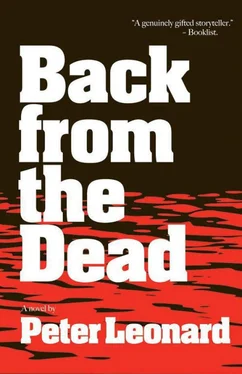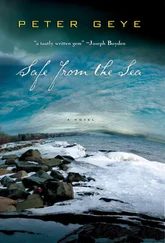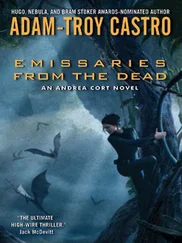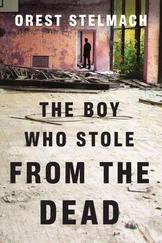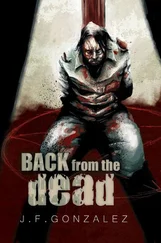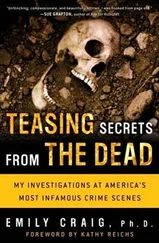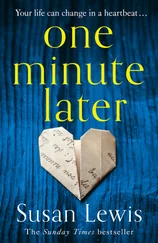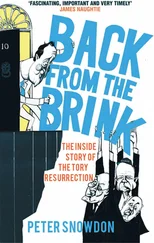He went to the cellar, staring at the crates that had not been opened since he had purchased the villa, and inventoried the paintings in his head. He had another Van Gogh: Still Life: Vase with Five Sunflowers, a Chagall, two Matisses, a Kandinsky, a Klee and several dozen lesser works. He and Braun had taken them from what remained of Hans Frank’s collection at the end of the war, and divided them. Many had “ERR” stamped on the back, confirming they had been stolen by the Einsatzstab Reichsleiter Rosenberg, most likely from private collections and museums in France and the Netherlands, and had ended up in Frank’s collection at the palace of Count Potocki, his residence in Krzeszowice.
Frank had been Hitler’s legal adviser and had been appointed governor general of occupied Poland. Hess had met Hans Frank over the years and they had become friends. Both were avid chess players and ardent anti-Semites. Hess and Arno Rausch had visited Frank on their way out of Poland in early January 1945. When they had arrived at the palace, Frank’s men were filling trucks with his collection of confiscated art. Frank was shipping everything to his estate in Tegernsee in southern Bavaria.
After dinner Hess walked Marie-Noëlle to her car. She was wearing the dark brimmed hat, red scarf and green cape, her trademark apparel. He thought she looked like a bullfighter. Hess said good night, opened the electric gate and watched her drive out. He went back to the house, locked the doors, turned off the lights and went upstairs. He loaded the Benelli shotgun and laid it on the bed, barrel pointing at the sliding door on the other side of the room. The Walther was on the table next to him — less than an arm’s length away. The drapes were open. He could see a three-quarter moon and the lights of Nice in the distance.
“I think we should follow him,” Harry said, looking out at lights on the promenade, the night sky and the Mediterranean dark behind it. They were sipping evening cocktails in their suite at the Negresco. “See what he’s up to. Make sure he’s at the villa before we go after him.”
Cordell said, “Look for a place to grab him.”
“The way Mossad kidnapped Adolf Eichmann in Buenos Aires,” Colette said. “Took him out when he got off the bus, returning home from work, kept him in a house in the city for a week. To get him out of Argentina they drugged him and dressed him in an El Al uniform, saying he’d had too much to drink as they boarded a plane bound for Israel. The Israelis were surprised how cooperative Eichmann was. It was as if he was expecting them.”
“That’s what I’m sayin’, grab him off the street.” Cordell sipped his drink.
“There’s that bakery just down the hill from the villa,” Harry said. “We can wait there till he drives by. I agree with Cordell, it might be easier to surprise him.”
Colette said, “What will we do with him?”
“Take him out. What do you think?”
“I think we should bring him to the police.”
Cordell glanced at her. “What’re they going to do?”
“Arrest him.”
“As far as they know he’s a French citizen named Vincent Chartier,” Harry said. “You think they’re going to take our word over his? They’re going to let him go, and he’s going to disappear again.”
“Harry, we have proof he’s a war criminal. You’re the survivor. Tell them your story.”
“What do I have that proves I’m a survivor? And what do I have that connects me to Hess?” Harry paused, sipped his whisky. “Hess has a French passport. According to the tax records he’s owned property in Nice since ’48. He’s a solid citizen.”
They were parked on corniche des Oliviers at eight the next morning in front of the bakery, car facing down hill, Cordell behind the wheel, Colette next to him and Harry in back, training binoculars on every driver and passenger in every car that passed them in a steady stream of traffic. The small parking lot was crowded. He saw the dark-haired woman from Hess’ villa come out of the bakery carrying two baguettes and a white bag of pastries. She got in the Fiat and drove back up the hill.
By ten there was hardly any traffic, just an occasional car or truck passing by. Looking through the rear window Harry could see a dark sedan come over the hill. He waited till it was about fifty yards away, raised the binoculars, put them on the grill, it was a Renault, put them on the windshield, sun glinting off making it difficult to see in. Tried to focus on the driver’s face but the car was moving too fast. He adjusted the viewfinder, pulling back as the car closed in on them, held on the driver’s face till he was sure. “There he is.”
Colette turned in her seat.
Cordell started the car, glanced in the side mirror. “I see him.”
The Renault sped by. Cordell started the Peugeot and took off after it. They followed Hess down the steep winding roads to boulevard Gambetta and all the way to the promenade des Anglais, then around the harbor and up the coast.
“Where you think he’s goin’?”
“Maybe he knows we’re on to him, he’s leaving the country. The Italian border’s right up here. Head down the Riviera, reinvent himself in Rapallo.”
A few minutes later they were in Monaco, Harry looking at the marina filled with pleasure boats and yachts, and highrise apartment buildings built around the harbor. Hess turned and they followed him into the city that reminded Harry of Palm Beach with its wide boulevards, palm trees and Greco-Roman architecture.
Hess parked in front of Galerie Broussard, got out, closed the door, moved to the trunk, opened it and took out a rectangular package wrapped in brown paper. Harry pictured the painting he saw on the dresser in Hess’ room and now it made sense. “That’s the painting you found in the locker, I’ll bet.”
Colette said, “The Painter on the Road to Tarascon by Van Gogh.”
“Describe it.”
“It’s a self portrait — Van Gogh on the road, carrying artist’s supplies — showing himself as an alienated outsider.”
“The painting in Hess’ villa was signed Vincent .”
“That’s how Van Gogh signed his paintings. Harry, you saw it and didn’t say anything?”
“It didn’t occur to me till now.”
Hess was thinking about the value of the painting as he walked into the gallery. Based on what he knew, and he was no expert, the Van Gogh would sell for somewhere between five and seven million dollars. The sale would be confidential and discreet. Absolutely no publicity. No one except Broussard would know his identity. The money would be paid to Broussard, and Broussard would deduct his fee and send the balance to Hess. He would deposit the money in his account at Société Générale, and at the appropriate time, transfer the money to his Swiss account. When he needed additional funds he would sell another painting.
Broussard saw Hess enter the gallery and came right over. “Bonjour, Monsieur Chartier. I see you have brought the painting. How exciting. Shall we unveil it in my office?”
Hess followed Broussard across the gallery floor to a hallway that led to offices. Broussard’s was big and open, simple chrome-and-glass desk, black leather chairs, a wall of bookshelves. The only thing that looked out of place was a chrome easel set up on the floor next to the desk.
Hess unwrapped the painting. Broussard took the discarded paper from him, folded it and placed it on the desk. Hess set the painting on the easel and now Broussard came over and stood close, smiling.
“The Painter on the Road to Tarascon .” Broussard’s grin faded and he held Hess in his gaze. “It is impossible. This painting was destroyed when the Allies bombed Magdeburg, setting fire to the Kaiser Friedrich Museum. Where on earth did you get it?”
Читать дальше
